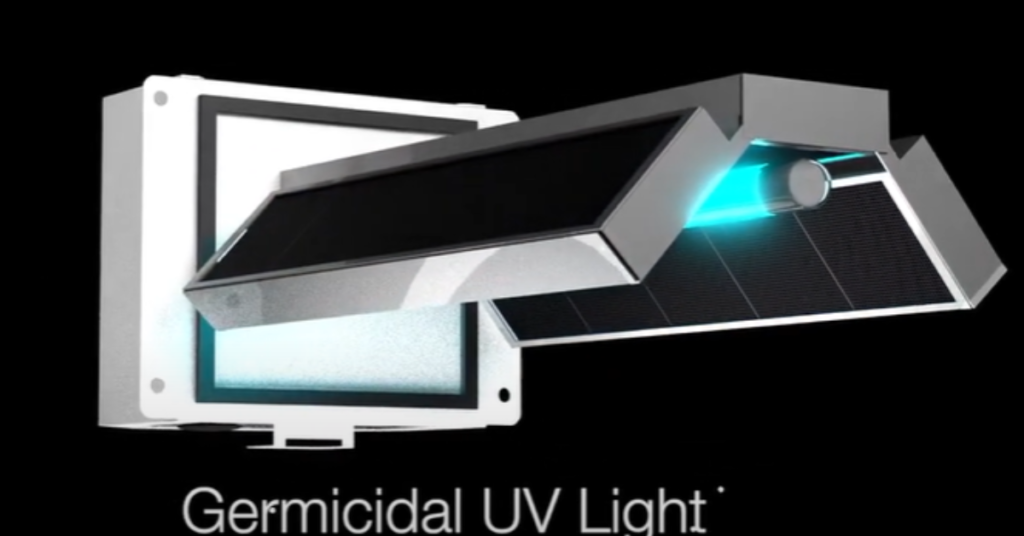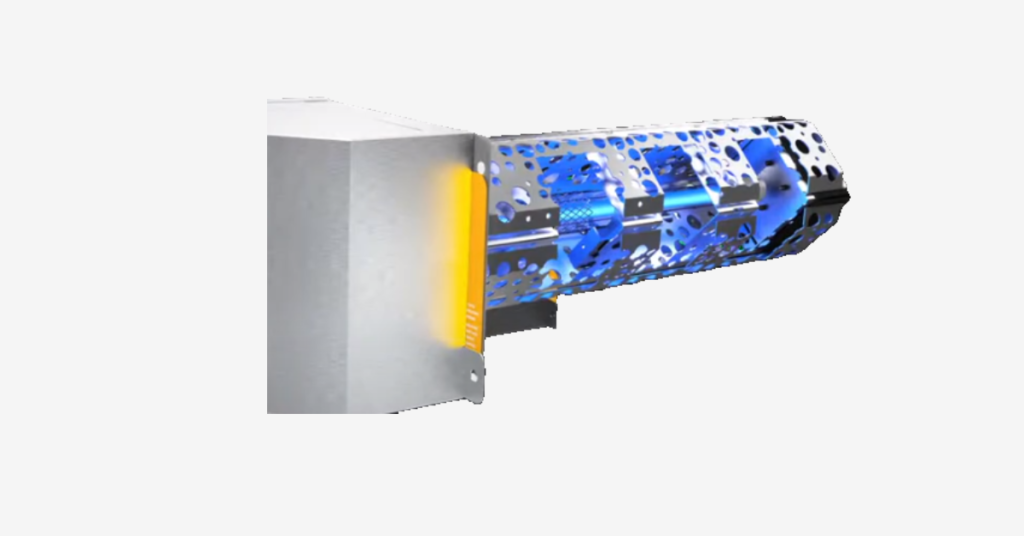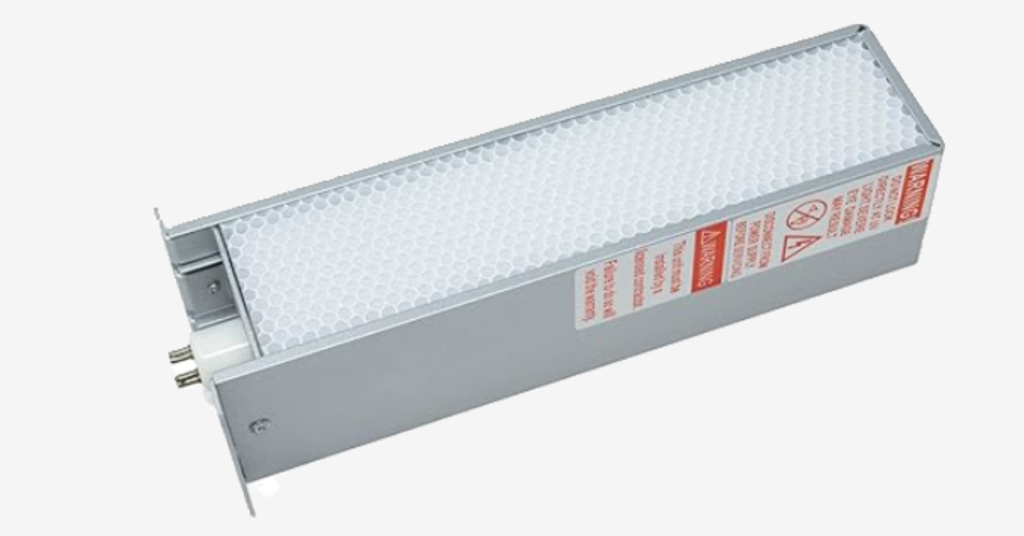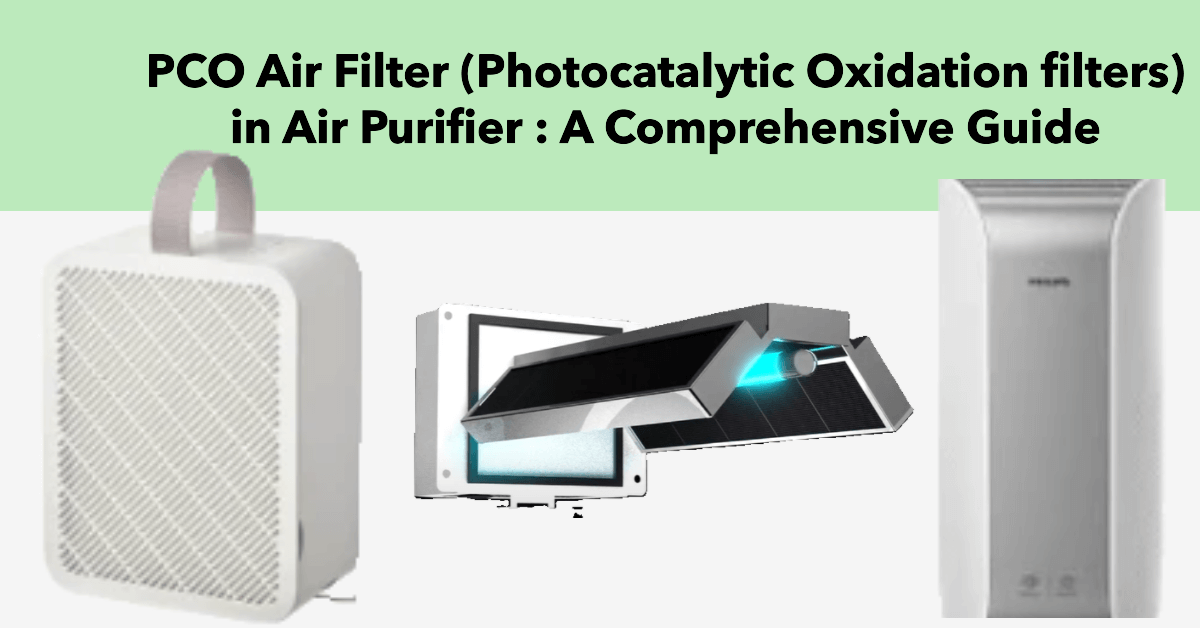The “PCO Air Filter” or photocatalytic oxidation air filter embodies the pivotal role in revolutionizing air purification systems. By harnessing the principles of photocatalysis, these filters go beyond conventional methods, providing an efficient and proactive approach to purifying indoor air.
PCO filter technology employ a photocatalytic reaction when exposed to light. This reaction generates highly reactive radicals that swiftly break down pollutants at a molecular level, rendering them harmless. Whether it’s allergens, bacteria, or volatile organic compounds (VOCs), these filters offer a comprehensive solution, addressing a myriad of pollutants that compromise the air we breathe daily.
In this comprehensive exploration, we delve into the various facets of PCO filter used inside Air Purifiers, its mechanisms, applications, benefits along with examining its health impacts, consumer awareness, environmental considerations, future trends, case studies, and recommendations for optimal use.
Introduction of PCO Air Filter
A. Definition of Photocatalytic Oxidation (PCO)
What is a PCO filter? Photocatalytic Oxidation (PCO) is an advanced air purification technology that utilizes photocatalysts, typically titanium dioxide, to neutralize and eliminate airborne pollutants. This process is activated by ultraviolet (UV) light, triggering a chemical reaction that transforms contaminants into harmless by-products.

B. Overview of Air Purification
The quest for clean and healthy indoor air has led to the development of various air purification technologies. Air purifiers, equipped with innovative mechanisms like PCO air filters, aim to improve indoor air quality by removing pollutants such as dust, allergens, and volatile organic compounds (VOCs).
C. Importance of Air Quality
The importance of maintaining high-quality indoor air cannot be overstated. Poor air quality can lead to various health issues, including respiratory problems and allergies. As individuals spend a significant amount of time indoors, ensuring optimal air quality is crucial for overall well-being.
Background of PCO Filters
A. Explanation of Photocatalysis
Photocatalysis, the fundamental process behind PCO filters, involves the activation of photocatalysts by light energy. In the context of air purification, this mechanism allows for the breakdown and oxidation of pollutants, providing an effective and chemical-free solution for cleaner air.

B. Evolution of PCO Technology
The development of PCO technology has evolved over time, with advancements in materials and design. Early iterations have given way to more efficient and reliable PCO air filters, offering enhanced performance in capturing and neutralizing a wide range of indoor pollutants.
C. Comparison with Traditional Filters
PCO filters differ significantly from traditional air filters, which primarily rely on physical barriers to capture particles. In contrast, PCO air filtration go beyond mere filtration, actively breaking down pollutants at a molecular level. This innovative approach sets PCO technology apart in the realm of air purification.
Mechanism of PCO air Filters
A. Photocatalytic Reaction Process
The photocatalytic reaction process in PCO filters involves the activation of photocatalysts, such as titanium dioxide, by exposure to ultraviolet (UV) light. This activation triggers a chemical reaction that breaks down airborne pollutants into harmless by-products, effectively purifying the air in the process.
B. Role of Catalysts
Catalysts play a pivotal role in the PCO air filtration mechanism. Titanium dioxide, commonly used as a photocatalyst, facilitates the oxidation of pollutants. The catalyst accelerates the breakdown of contaminants, ensuring a rapid and efficient purification process.
C. Interaction with Airborne Contaminants
PCO filters interact with a variety of airborne contaminants, including dust, allergens, and volatile organic compounds (VOCs). As air flows through the filter, the activated photocatalysts engage with these contaminants, neutralizing them and contributing to a significant reduction in indoor pollution.

Benefits of PCO Filters
A. Improved Air Quality
PCO filters lead to a marked improvement in indoor air quality by effectively removing pollutants. The photocatalytic process ensures a thorough purification, resulting in a healthier and more comfortable living or working environment.
B. Removal of Volatile Organic Compounds (VOCs)
One of the key benefits of PCO filters is their ability to remove volatile organic compounds (VOCs). These compounds, often emitted by household products, are effectively neutralized, reducing potential health risks associated with prolonged exposure.
C. Reduction of Airborne Pathogens
PCO filters contribute to a safer environment by actively reducing airborne pathogens, including bacteria and viruses. This feature is particularly valuable in medical settings and places where maintaining a sterile atmosphere is crucial.
Applications of PCO Filters
A. Residential Air Purification
These filters find extensive use in residential settings, providing households with a reliable means of improving indoor air quality. The technology offers peace of mind by creating a healthier living environment for occupants.
B. Commercial and Industrial Use
Commercial and industrial establishments benefit from the versatility of PCO filters. These filters are employed in various settings, such as offices and manufacturing facilities, to maintain clean and safe indoor air for employees and processes.
C. Medical Settings
In medical settings, where air purity is paramount, these filters play a crucial role in reducing the risk of airborne infections. Their ability to neutralize pathogens makes them invaluable in hospitals, clinics, and other healthcare facilities.
Effectiveness of PCO Filters
A. Studies and Research Findings
Scientific studies and research findings consistently affirm the effectiveness of PCO filters in purifying indoor air. These studies often highlight the reduction of pollutants and the overall improvement in air quality achieved through the photocatalytic oxidation process.
B. Comparison with Other Air Purification Technologies
When compared with other air purification technologies, PCO filters stand out for their ability to address a wide range of pollutants. The comprehensive nature of photocatalytic oxidation sets them apart, offering a holistic solution for indoor air quality.
C. Real-world Performance
Real-world performance of PCO filters is well-documented through user testimonials and practical applications. The technology has proven effective in diverse settings, demonstrating its reliability in providing cleaner and healthier indoor environments.
Challenges and Limitations
A. Durability and Longevity
One of the challenges associated with PCO filters is ensuring their durability and longevity. Ongoing efforts focus on improving the materials and design of these filters to enhance their lifespan and overall performance.
B. Specific Contaminant Removal
While PCO air filtration effectively address a broad spectrum of pollutants, there may be limitations in the removal of specific contaminants. Ongoing research aims to refine the technology for even greater specificity in pollutant removal.
C. Maintenance Requirements
Maintenance requirements, including regular cleaning and replacement schedules, are considerations for users of PCO filters. Clear guidelines and user-friendly maintenance processes contribute to the optimal performance of the filters over time.
Integration in Air Purifiers
A. Design Considerations
Design considerations play a crucial role in the successful integration of photocatalytic oxidation air filters into air purifiers. Manufacturers focus on creating user-friendly designs that optimize the functionality and effectiveness of the filters within the overall purifier structure.
B. Compatibility with Existing Systems
Ensuring compatibility with existing ventilation and air purification systems is a key consideration in the integration of PCO filters. Collaboration with HVAC professionals ensures seamless integration, allowing for enhanced overall performance. A PCO HVAC filter, or Photocatalytic Oxidation HVAC filter, operates through a process that combines advanced photocatalysis with the air circulation system of HVAC systems.
C. Market Trends
Market trends in the air purification industry reflect the growing adoption of photocatalytic oxidation filters. As awareness of their effectiveness increases, manufacturers respond with innovative designs and features, aligning with consumer demands for cleaner and safer indoor air.
Health Impacts and Safety
Understanding the health implications of Photocatalytic Oxidation (PCO) filters is paramount to ensuring their safe and effective use. In this section, we delve into human exposure considerations, potential by-products, and the adherence to safety regulations and standards.
A. Human Exposure Considerations
As with any air purification technology, ensuring that PCO filters are safe for human exposure is a primary concern. Here are key considerations:
- Guidelines for Safe Usage: PCO filters are generally safe when used within recommended guidelines. Adhering to manufacturer instructions regarding installation and maintenance is crucial for optimizing safety.
- Long-term Exposure Risks: Prolonged exposure to high levels of activated photocatalysts may pose respiratory risks. It is imperative to ensure adequate ventilation in indoor spaces where PCO filters are employed to mitigate any potential health concerns.
B. Potential By-products
While PCO filters effectively neutralize pollutants, it’s essential to be aware of potential by-products generated during the photocatalytic oxidation process. The following table outlines key by-products and their potential impacts:
| By-product | Potential Impact |
|---|---|
| Formaldehyde | Eye and respiratory irritation |
| Carbon Dioxide | Minimal impact at typical concentrations |
C. Safety Regulations and Standards
To guarantee the safety of PCO filters, manufacturers must adhere to established safety regulations and standards:
- ISO 22000 Compliance: Manufacturers should comply with safety standards, such as ISO 22000 for air purification devices, ensuring that the production and handling of photocatalytic oxidation filters meet international safety criteria.
- Certification Processes: Regular monitoring and certification processes should be in place to verify that PCO filters meet safety requirements. This not only ensures consumer safety but also instills confidence in the efficacy of the technology.
Consumer Awareness
As Photocatalytic Oxidation (PCO) filters become increasingly prevalent, educating consumers about the technology’s benefits and considerations becomes pivotal. This section focuses on the importance of education, the influence of marketing, and how consumer decision-making is shaped in the context of PCO air purifiers.
A. Education on PCO Technology
- Scientific Understanding: Providing consumers with a basic understanding of the science behind PCO technology is essential. Clear, accessible materials explaining how photocatalytic oxidation works can empower users to make informed decisions.
- Effectiveness Highlights: Emphasizing the effectiveness of photocatalytic oxidation air filter in reducing a wide range of pollutants, including bacteria, viruses, and volatile organic compounds, helps consumers appreciate the full scope of the technology’s capabilities.
B. Marketing and Public Perception
- Transparent Communication: Manufacturers should adopt transparent communication in their marketing strategies. Clearly conveying how PCO filters work, their benefits, and any limitations fosters trust and positive public perception.
- Addressing Concerns: Acknowledging and addressing common concerns, such as potential by-products or safety considerations, in marketing materials helps manage expectations and build confidence among consumers.
C. Consumer Decision-Making
- Comparative Information: Providing consumers with comparative information, such as how PCO filters differ from other air purification technologies, enables them to make well-informed decisions based on their specific needs and preferences.
- User Testimonials: Sharing positive user experiences and testimonials can significantly influence consumer decision-making. Real-world accounts of improved air quality and health benefits create a compelling narrative for potential buyers.
Environmental Considerations
As global awareness of environmental sustainability grows, evaluating the eco-friendliness of Photocatalytic Oxidation (PCO) filters is imperative. This section examines the environmental impact of PCO filters, including their eco-friendliness, energy efficiency, and considerations for end-of-life disposal.
A. Eco-Friendliness of PCO Filters
- Chemical-Free Operation: These filters are generally considered eco-friendly due to their chemical-free operation. The absence of harmful chemicals in the purification process aligns with the broader goal of reducing environmental impact.
- Manufacturing Process: While the operation of these filters is eco-friendly, attention must be given to the manufacturing process. Evaluating the raw materials and production methods ensures a comprehensive understanding of the overall environmental footprint.
B. Energy Efficiency
- Low Energy Consumption: These filters are known for their relatively low energy consumption compared to some traditional air purification systems. This energy efficiency contributes to a more sustainable and cost-effective solution for maintaining indoor air quality.
- Integration with Smart Technologies: The integration of these filters with smart technologies enhances energy efficiency. Automated features, such as adjusting operation based on real-time air quality data, optimize energy usage without compromising effectiveness.
C. End-of-life Disposal
- Recyclability: Assessing the recyclability of these filters is crucial for minimizing environmental impact at the end of their lifecycle. Manufacturers should provide guidance on how to dispose of or recycle the filters responsibly.
- Environmental Regulations: Compliance with environmental regulations for disposal is essential. This includes providing clear instructions for proper disposal methods to prevent any adverse environmental effects.
Future Trends and Innovations
The landscape of Photocatalytic Oxidation (PCO) filters is dynamic, with ongoing research and development shaping the future of air purification. This section explores the latest trends, emerging technologies, and anticipated improvements in PCO filter technology.
A. Ongoing Research and Development
- Efficiency Enhancements: Ongoing research focuses on enhancing the efficiency of PCO filters. This includes optimizing catalyst materials, improving UV light sources, and exploring advanced filtration techniques to further elevate performance.
- Broader Pollutant Coverage: Researchers are working on expanding the range of pollutants targeted by PCO filters. This includes addressing specific pollutants that may have been challenging for earlier iterations of the technology to neutralize effectively.
B. Emerging Technologies
- Nanotechnology Integration: The integration of nanotechnology into PCO filters is an emerging trend. Nanomaterials offer increased surface area and reactivity, potentially enhancing the overall efficiency of the photocatalytic process.
- Sensor Integration: Future PCO filters may incorporate advanced sensors to provide real-time data on air quality. This integration enables adaptive control systems, optimizing filter operation based on specific pollution levels.
C. Anticipated Improvements
- Longevity: Improving the longevity of PCO filters is a key focus. Anticipated advancements aim to extend the operational lifespan of filters, reducing the frequency of replacements and associated environmental impact.
- Cost-Effectiveness: Research and development efforts also target cost-effectiveness. Innovations may lead to more affordable production methods, making PCO filter technology accessible to a broader consumer base.
Case Studies
Examining real-world applications of Photocatalytic Oxidation (PCO) filters provides valuable insights into their successes, challenges faced, and user experiences. This section presents case studies that illustrate the practical implementation of PCO filters in various settings.
A. Successful Implementations
- Healthcare Facilities: PCO filters have demonstrated success in healthcare settings, where maintaining high indoor air quality is crucial. Reductions in airborne pathogens and improved overall air quality contribute to a healthier environment for patients and staff.
- Educational Institutions: Implementing PCO filters in schools and universities has shown positive outcomes. Improved air quality can enhance the learning environment by reducing the transmission of respiratory infections and creating a more comfortable space for students and educators.
B. Challenges Faced and Solutions
- Initial Cost Concerns: Some users may express concerns about the initial cost of installing PCO filters. To address this, manufacturers and case study examples often highlight the long-term cost-effectiveness and health benefits, emphasizing the value proposition over time.
- Integration with Existing Systems: Challenges may arise when integrating PCO filters with existing ventilation systems. Solutions involve collaboration with HVAC professionals to ensure seamless integration and optimal performance.
C. User Experiences
- Allergy and Asthma Relief: Users in homes with PCO filters often report relief from allergies and asthma symptoms. The technology’s ability to neutralize common allergens contributes to a healthier living environment.
- Odor Elimination: Positive user experiences include the effective elimination of odors from cooking, pets, and other sources. PCO filters provide a comprehensive solution for creating a fresh and pleasant indoor atmosphere.
Recommendations for Effective Use
To derive maximum benefits from PCO filters in air purifiers, proper installation, regular maintenance, and integration with ventilation systems are crucial. This section provides practical recommendations for users and professionals alike.
A. Proper Installation
- Follow Manufacturer Guidelines: Consult the manufacturer’s guidelines for optimal placement and installation of PCO filters. Proper installation ensures the filters can effectively capture and neutralize pollutants.
- Consider Ventilation: Adequate ventilation is essential to prevent the accumulation of activated photocatalysts in indoor spaces. Ensure that there is sufficient airflow to disperse any by-products and maintain a healthy indoor environment.
B. Maintenance Best Practices
- Regular Cleaning: Periodically clean the PCO filters as recommended by the manufacturer. Accumulated dust and particles can hinder the effectiveness of the photocatalytic process.
- Replacement Schedule: Adhere to the recommended replacement schedule for PCO filters. Regular replacement ensures that the filters continue to operate at peak efficiency.
C. Integration with Ventilation Systems
- Collaborate with HVAC Professionals: When integrating PCO filters with existing ventilation systems, collaborate with HVAC professionals to ensure compatibility and optimal performance.
- Monitor Air Quality: Use air quality monitors to assess the effectiveness of PCO filters. Real-time data allows users to adjust settings and ensure continuous air purification.
Health Impacts and Safety
A. Human Exposure Considerations
- Safe Usage Guidelines: Adhering to recommended guidelines ensures the safe use of PCO filters in indoor environments.
- Ventilation Importance: Ensuring adequate ventilation is essential to mitigate potential respiratory risks associated with long-term exposure.
B. Potential By-products
- By-product Awareness: Being aware of potential by-products, such as formaldehyde and carbon dioxide, allows users to address any associated health concerns.
C. Safety Regulations and Standards
- ISO 22000 Compliance: Manufacturers must comply with safety standards like ISO 22000 to ensure the production of safe and effective PCO filters.
- Certification Processes: Regular monitoring and certification processes validate PCO filters’ adherence to safety requirements.
Consumer Awareness
A. Education on PCO Technology
- Scientific Understanding: Educating consumers about the science behind PCO technology empowers them to make informed decisions.
- Effectiveness Communication: Transparently communicating the effectiveness of PCO filters enhances consumer confidence.
B. Marketing and Public Perception
- Transparency in Marketing: Transparent marketing strategies build trust by clearly conveying how PCO filters work and addressing potential concerns.
- User Testimonials: Positive user testimonials contribute to positive public perception and influence consumer decision-making.
C. Consumer Decision-Making
- Comparative Information: Providing consumers with comparative information helps them make informed decisions based on their specific needs.
Environmental Considerations
A. Eco-Friendliness of PCO Filters
- Chemical-Free Operation: PCO filters are generally eco-friendly due to their chemical-free operation.
B. Energy Efficiency
- Low Energy Consumption: The low energy consumption of PCO filters contributes to their sustainability.
C. End-of-life Disposal
- Recyclability: Assessing the recyclability of PCO filters ensures responsible disposal methods are followed.
Conclusion
In summary, the journey through the various facets of Photocatalytic Oxidation (PCO) filters highlights their potential to revolutionize indoor air purification. From understanding their mechanism of action and benefits to addressing health impacts, consumer awareness, environmental considerations, and future trends, PCO air filters emerge as a holistic solution. By embracing best practices, staying informed about ongoing innovations, and learning from successful case studies, we pave the way for a future where PCO filters play a central role in creating healthier and more sustainable indoor environments.
The future of PCO filter technology holds immense promise, with ongoing research and innovations anticipated to enhance efficiency, broaden pollutant coverage, and make the technology more accessible.
FAQ
What is the difference between PCO and HEPA?
PCO (Photocatalytic Oxidation) and HEPA (High-Efficiency Particulate Air) filters serve different purposes. PCO filters neutralize a broad range of pollutants, including gases and volatile organic compounds, through a photocatalytic process. HEPA filters, on the other hand, primarily capture particles like dust and allergens but may not address gaseous pollutants.
Is PCO technology safe?
Yes, PCO technology is generally considered safe. It relies on the natural process of photocatalysis, which occurs in the presence of light and oxygen. However, it’s essential to follow manufacturer guidelines for proper installation and maintenance to ensure safe and effective operation.
What does PCO mean in HVAC?
In HVAC, PCO stands for Photocatalytic Oxidation. PCO technology integrated into HVAC systems involves the use of a specialized filter that employs photocatalysts activated by ultraviolet light to actively neutralize various airborne contaminants, contributing to improved indoor air quality.
What is PCO air?
PCO air refers to air that has undergone purification using Photocatalytic Oxidation technology. This process involves the activation of photocatalysts to break down and neutralize pollutants in the air, resulting in a cleaner and healthier indoor environment.
How does PCO work?
PCO, or Photocatalytic Oxidation, works by utilizing advanced photocatalysts, often titanium dioxide, coated onto a filter surface. When exposed to ultraviolet (UV) light, these photocatalysts generate highly reactive oxygen species. These species actively oxidize and break down a variety of airborne pollutants at a molecular level, contributing to the purification of the air.
Does PCO produce ozone?
Some PCO systems may produce a minimal amount of ozone as a byproduct of the photocatalytic process. However, the levels are typically low and within safety standards. It’s essential to check the specifications of the PCO device and ensure that it meets regulatory guidelines to minimize ozone production.
What is the difference between PCO and PECO?
PCO (Photocatalytic Oxidation) and PECO (Photo Electrochemical Oxidation) are both air purification technologies. PCO uses photocatalysts activated by light to neutralize pollutants, while PECO employs a photoelectrochemical process. PECO filters typically use a light-activated catalyst on a semiconductor surface to generate reactive species, providing a different approach to air purification compared to PCO.
Are HEPA air filters safe?
Yes, HEPA (High-Efficiency Particulate Air) filters are generally safe. They work by mechanically capturing particles like dust, pollen, and allergens. However, it’s crucial to use HEPA filters as recommended by the manufacturer and replace them regularly to maintain effectiveness. Additionally, some individuals may have specific sensitivities, so it’s advisable to consult product information and consider personal health conditions when selecting air filters.
DheerajSonwane is a dedicated writer with expertise in air purification technologies. He focuses on providing well-researched content to help readers improve indoor air quality in homes and businesses. As the lead writer at AirPurifierMaster.com, Dheeraj offers practical advice his insightful reviews guide individuals in choosing the best air purifiers for their needs.

